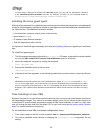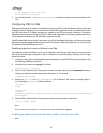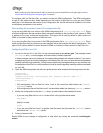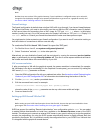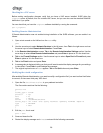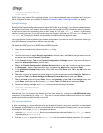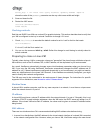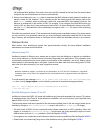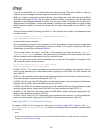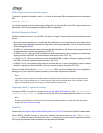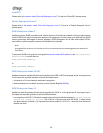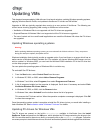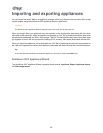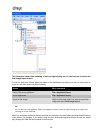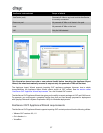
30
• If you try to install RHEL 4.x on a VM that has more than two virtual CPUs (which RHEL 4.x does not
support), an error message incorrectly reports the number of CPUs detected.
• RHEL 4.7 contains a bug which normally prevents it from booting on a host with more than 64GiB of
RAM (Red Hat Bugzilla 311431). For this reason XenServer RHEL 4.7 guests are only allocated RAM
addresses in the range below 64GiB by default. This may cause RHEL 4.7 guests to fail to start even if
RAM appears to be available, in which case rebooting or shutting down other guests can cause suitable
RAM to become available. If all else fails, temporarily shut down other guests until your RHEL 4.7 VM
can boot.
Once you have succeeded in booting your RHEL 4.7 VM, install the Citrix Tools for Virtual Machines and
run the command:
xe vm-param-remove uuid=<vm_uuid> param-name=other-config \
param-key=machine-address-size
to remove the memory restriction.
• On some hardware (generally newer systems), the CPU will generate occasional spurious page faults
which the OS should ignore. Unfortunately all versions of RHEL 4 fail to ignore the spurious fault and it
causes them to crash (Red Hat Bugzilla 465914).
This has been fixed in our kernel. The RHEL 4 VM templates have been set with the suppress-
spurious-page-faults parameter. This assures that the installation will continue safely to the point
that the standard kernel is replaced with the Citrix-provided kernel.
There is a performance impact with this parameter set, so, after the VM installation is complete, at the
VM command prompt, run the command:
xe vm-param-remove uuid=<vm_uuid> other-config: \
param-key=suppress-spurious-page-faults
• In RHEL 4.5 to 4.7, if a xenbus transaction end command fails it is possible for the suspend_mutex to
remain locked preventing any further xenbus traffic. Applying the Citrix RHEL 4.8 kernel resolves this
issue. [EXT-5]
• RHEL 4.7, 4.8, sometimes when there are many devices attached to a VM, there is not enough time for
all of these devices to connect and startup fails. [EXT-17]
• In RHEL 4.5 to 4.8, use of the XFS filesystem can lead to kernel panic under exceptional circumstances.
Applying the Citrix RHEL 4.8 kernel resolves this issue. [EXT-16 ]
• In RHEL 4.5 to RHEL 4.8, the kernel can enter no tick idle mode with RCU pending; this leads to a guest
operating system lock up. Applying the Citrix RHEL 4.8 kernel resolves this issue. [EXT-21]
• In RHEL 4.7, 4.8, VMs may crash when a host has 64GiB RAM or higher configured. Applying the Citrix
RHEL 4.8 kernel resolves this issue. [EXT-30]
• In RHEL 4.5 to 4.8 and 5.0 to 5.3, the network driver contains an issue that can, in rare circumstances,
lead to a kernel deadlock. Applying the Citrix RHEL 4.8 kernel resolves this issue. [EXT-45]
Preparing a RHEL 4.5 to 4.8 guest for cloning
To prepare a RHEL 4.5 to 4.8 guest for cloning (see the section called “MAC address”), edit /etc/
sysconfig/network-scripts/ifcfg-eth0 before converting the VM into a template, and remove the
HWADDR line.
Note:
Red Hat recommends the use of Kickstart to perform automated installations, instead of directly cloning disk
images (see Red Hat KB Article 1308).



